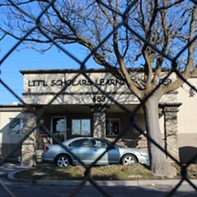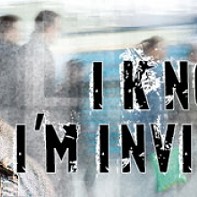Renovating the Homeless
Momentum builds behind relocating SLC shelters, but some advocates argue money could be better spent
By Eric S. Peterson @ericspetersonIn the 1980s, the homeless shelter in downtown Salt Lake City was surrounded by vacant lots, with most nearby traffic coming from the rumbling of passing trains. Fast forward to 2014, and The Road Home and Catholic Community Services shelters on Rio Grande Street between 200 and 300 South have seen development on all sides in the form of artsy apartments, and nearby Pioneer Park is surrounded by quaint cafes and eateries. Only 50 yards separates the busy holiday shoppers at The Gateway mall from the equally frantic crack and heroin shoppers outside the shelter on the other side of 200 South.
Now, a nonprofit called The Pioneer Park Coalition has been laying the groundwork for a controversial and potentially dramatic rehab to the neighborhood—a campaign to relocate the shelter, or at the least redesign the existing facility in a way that, says coalition leader Scott Howell, will help the safety and welfare of the homeless and improve the neighborhood around it.
Just as the decision to relocate the Utah State Prison in Draper has courted controversy that the plan is focused on improving property values and helping out developers, the discussion about relocating the shelter is causing some to worry that this, too, is about profitable land developments and not the betterment of the city's most vulnerable.
But Howell, a former Democratic state legislator who ran for U.S. Senate against Utah's Orrin Hatch in the 2012 election, says that what people don't realize is that his coalition is looking at every dimension of the problem and trying to bring everybody to the table—even those service providers who are grimly skeptical about the coalition's priorities.
"There are so many, many pieces of the puzzle that you have to take into consideration," Howell says. "It's not just saying we're going to move The Road Home and say everything's solved—people who think that don't have a clue of all the challenges."
While the coalition has expressed its support of a wide array of proposed reforms, it's the group's interest in relocation or redesign that's excited the most controversy. And for the first time in years, the discussion about relocation appears to have legs. Salt Lake City Mayor Ralph Becker recently announced the formation of a commission dedicated to evaluating homeless site services. His commission will be led by prominent figures such as philanthropist Gail Miller and former Salt Lake City Mayor Palmer DePaulis, who helped choose the location of the existing homeless shelter on Rio Grande Street.
Becker's strategic plan on homelessness isn't focused solely on re-evaluating the shelter site. The city has helped fund part-time jobs for homeless people cleaning up around the shelter area, and has proposed building 300 new permanent supportive-housing units in the city to help the chronically homeless.
But Becker also says that after 30 years, the existing shelter facilities are due for an update. The facilities are not only old, he says, but "are also configured in a way that if we were going to start from scratch, they probably wouldn't be designed this way."
And while he has his thoughts on the shelter, his emphasis is on a commission that can bring all the stakeholders together.
"We seem to be getting more and more side conversations around our facilities and what to do with [them]," Becker says. "I just believe, in general, we need to get everyone talking to each other, at the same time and preferably at the same place."
This big-table idea has also been espoused by The Pioneer Park Coalition, which boasts dozens of members ranging from businesses affected by crime around the shelter area to service providers.
But Glenn Bailey, director of the Crossroads Urban Center, a Salt Lake City low-income-advocacy group, says it's a smaller group that is steering the direction of the coalition. The steering committee includes representatives of Garbett Homes; Josh Romney, son of Mitt Romney, who owns property in the area; and Tiffany Provost of Axiom Properties, which owns the Tin Angel Café next to Pioneer Park.
Bailey says he's attended coalition meetings and that while the coalition has expressed interest in funding affordable housing, the message from the coalition's "powers that be" is that they won't be able to leverage private-investor dollars unless the focus is specific to transforming the shelter area, and relocation has been on the top of the agenda.
"Our community ought to be inclusive of rich and poor, and we should be looking for ways to live together and build one community rather than sort of pushing people around based on temporary economic incentives—and the value of that land right now is one of them," Bailey says.
Howell acknowledges that his involvement in the coalition came at the behest of Garbett Homes, which has wanted to develop land near Pioneer Park but has struggled due to the crime in the area. But he also says that his coalition's in-depth study of the problems in the area show that the reforms would be about more than prettifying the area. Extensive research into other sites, he says, makes it clear that having two streets run alongside a shelter, as in the case of Salt Lake City's, allows for an easy drive-through drug-buying experience, whereas a more restricted traffic design could impede drug dealers and buyers from swooping in and out of the shelter area, Howell says.
Perhaps one of the coalition's biggest strengths, Howell says, is being able to leverage private-sector support to improve not only the shelter—whether it's moved or stays on Rio Grande—but also the larger community of haves and have-nots. The coalition also boasts the expertise of architect and former Salt Lake City Councilman Soren Simonsen, who could help redesign the park to better accommodate families in the neighborhood, Howell says.
He adds that members of the coalition told Matt Minkevitch, the director of The Road Home, that they could line up donated construction and design services, as well as real-estate agents who would commit to not taking a fee if they could find a place to relocate the shelter, but that Minkevitch wasn't interested.
"I think Matt is a saint," Howell says. "But I also believe you can also get so caught up in your own world that you don't know what's happening outside the wall. You can't have this broad sense of what could be, from what is."
Minkevitch did not return a call for comment, but at a Dec. 12 legislative committee hearing, said that The Road Home's priority is not shelter renovation, but creating more affordable housing.
At the hearing, he cited the success of the Housing First model to help find supportive housing for the chronically homeless. Between 2005 and 2014, Utah made significant strides in bringing the chronically homeless from 17 percent of the homeless population down to 4 percent.
And the best way to help the shelter population, he argued, is by finding housing for the most troublesome cases.
"Over the economic downturn, we had a 300 percent increase in the number of families turning to us in need of shelter," Minkevitch told the committee. "But as jaw-dropping as that is, we didn't have to build a new or bigger shelter. The capacity we created was by helping [chronically homeless] individuals who are living at the shelter move out."
The chronically homeless, he said, "only represent 10 percent of the total population experiencing homelessness, but on any given night, those individuals consume 50 to 55 percent of all the beds we provide." And fewer chronically homeless translates into more beds for families and others who've found themselves homeless after a sudden economic downturn, and shelter until they're able to rebound.
Minkevitch told the committee that 90 percent of shelter residents cycle out of the shelter within a few months, but the other 10 percent could spend hundreds if not thousands of days in the shelter without the relief of supportive housing projects.
Bailey of the Crossroads Urban Center also says the priority above a new shelter is housing, for low-income families on the verge of homelessness.
"We also have a housing crisis on the front end, where working-class people can't afford rent anymore in our city, and that leads to homelessness, and then there's not enough opportunities on the back end for people ready to get out of the shelter," Bailey says. "That's where the money needs to be spent."
While Howell says transitional housing is important, he stresses that existing conditions at the shelter simply are not working out for the safety and welfare of the homeless.
The prevalence of the synthetic drug Spice in the shelter is one thing that Howell says the coalition is focusing on. He describes going on a ride-along with police when they found a man near the shelter who had pulled the lid off a manhole cover and was digging in the sewage for what he told them was a lost $20, but turned out to be a bag of Spice he had dropped.
The coalition plans to lobby the Legislature to find a more comprehensive way to ban the synthetic drug.
It's hard to ignore the fact that many come to the shelter because of their drug addictions, he says, or the amount of crime near the shelter.
A review of Salt Lake City Police Department responses to the shelter area show a surge in incidents police have responded to—though it's also likely that the increase is tied to SLCPD's Metro Support Bureau setting up shop near the shelter in July 2014, which has increased patrols and police presence in the neighborhood.
In 2013, The Road Home and the Weigand Homeless Day Center received 93 ambulance visits, compared to 116 ambulance calls from Jan. 1 to Sept. 30, 2014. In 2013, police responded to 17 calls to deal with mentally ill individuals, but in the first three quarters of 2014, responded to 43 calls of mentally ill individuals. Suicide attempts brought the police out 12 times in 2013 compared to 17 times in the first three quarters of this year. In 2013, the half block saw 100 calls for simple assault and 21 for aggravated assault—while in only the first three quarters of 2014, police responded to 234 simple-assault reports and 107 complaints of aggravated assault. Dispatches for assaults alone have more than tripled since 2013, and may quadruple before the year's end.
Howell says his coalition is ready to tackle this problem head-on, even if it upsets some of the established players in the support field.
"I might not be the most popular guy with the service community, or anyone who doesn't want change," Howell says. "But I also get that a genuine belief in transformation that will benefit our most vulnerable isn't easy."
Speaking of Homelessness
-
Need a Warm Place to Go
The Road Home homeless shelter in Salt Lake City is doing a great job of keeping people warm at night, but it fails to see the problems it causes ...
- Feb 27, 2013
-
Apologies to Unified Police
When I was growing up, I learned when you admitted a mistake, it made things easier for all parties involved. Thus, this is a correction to my July 12 letter titled “Homeless Being Bullied."
- Jul 25, 2012
-
Homeless Being Bullied
Becoming homeless is never one’s intent, but since this has happened to me, I have watched over the past little while and seen things I read about in history taking place right here in the Salt Lake City area.
- Jul 11, 2012
- More »
More by Eric S. Peterson
-
The Secret Sauce
How Utah lawmakers disclose—or don't disclose—conflicts of interest.
- Feb 14, 2024
-
Police departments in Salt Lake County spent almost $20 million on civil rights complaints in the past decade
The Co$t of Mi$conduct
- Oct 18, 2023
-
Women decry harassment and toxic culture at St. George auto dealership
Men at Work
- Oct 11, 2023
- More »
Latest in News
Readers also liked…
-
Raise a glass for E.L.T Harrison, architect of the Beerhive building on Main
Small Lake City
- Oct 11, 2023









